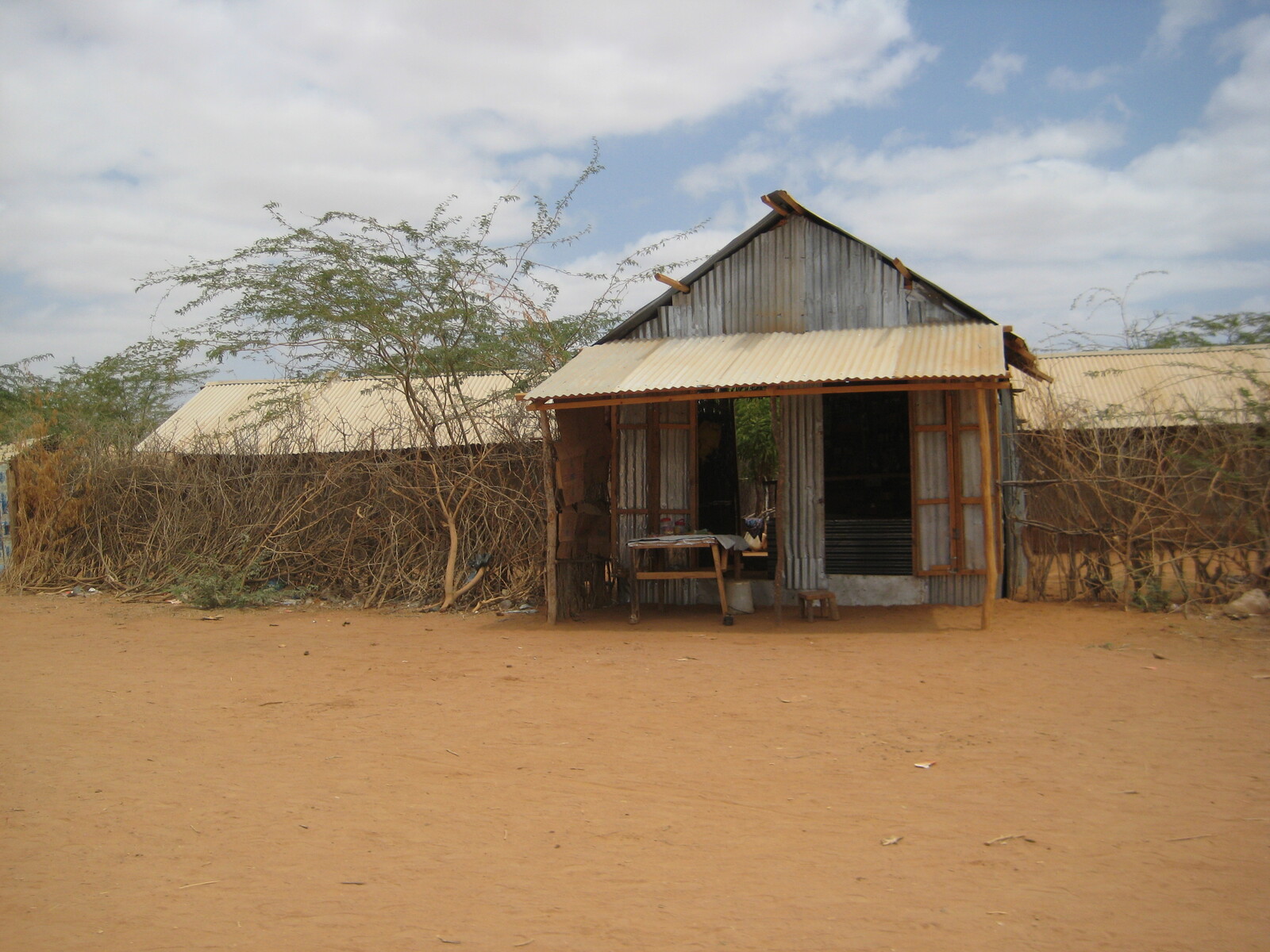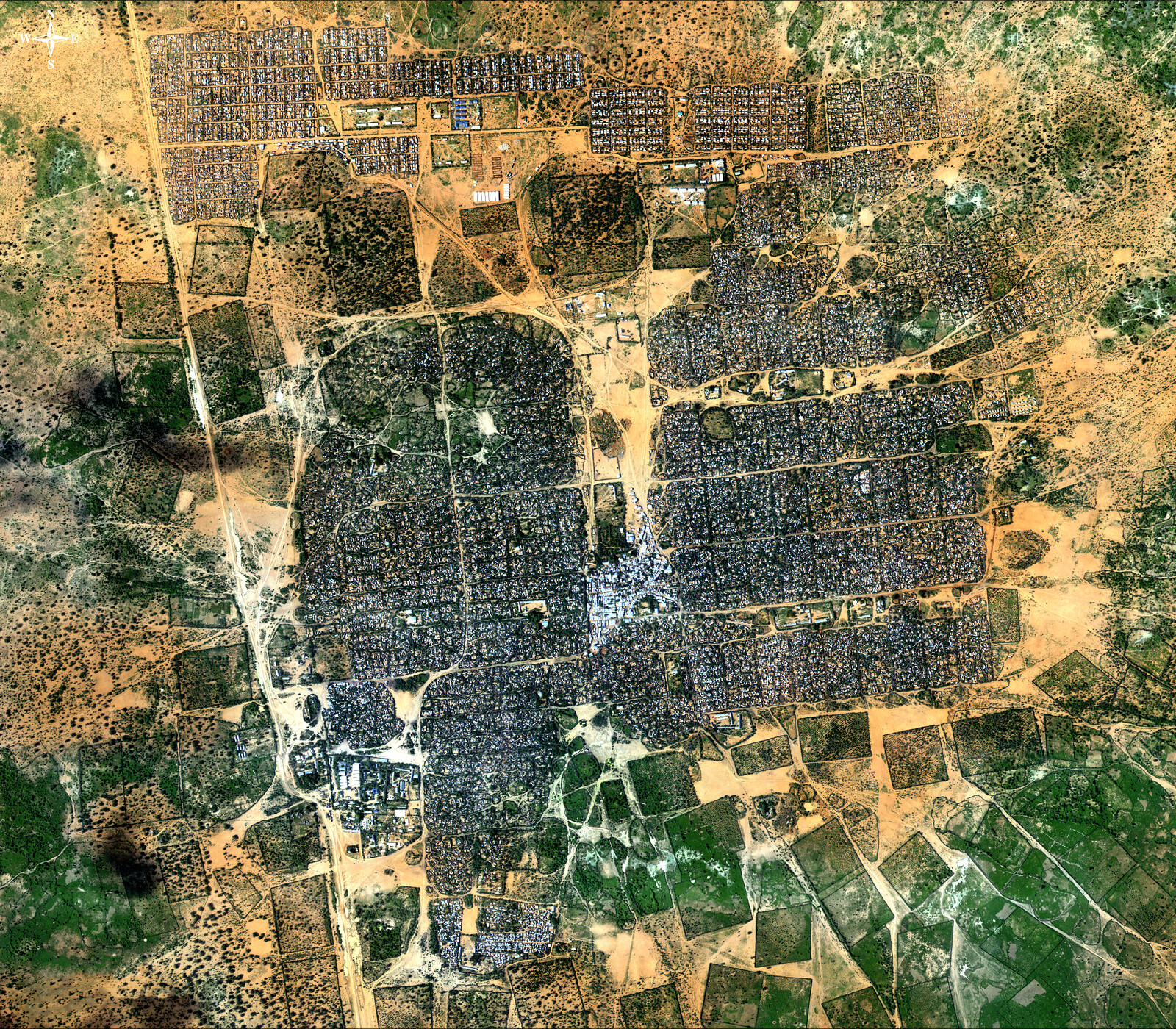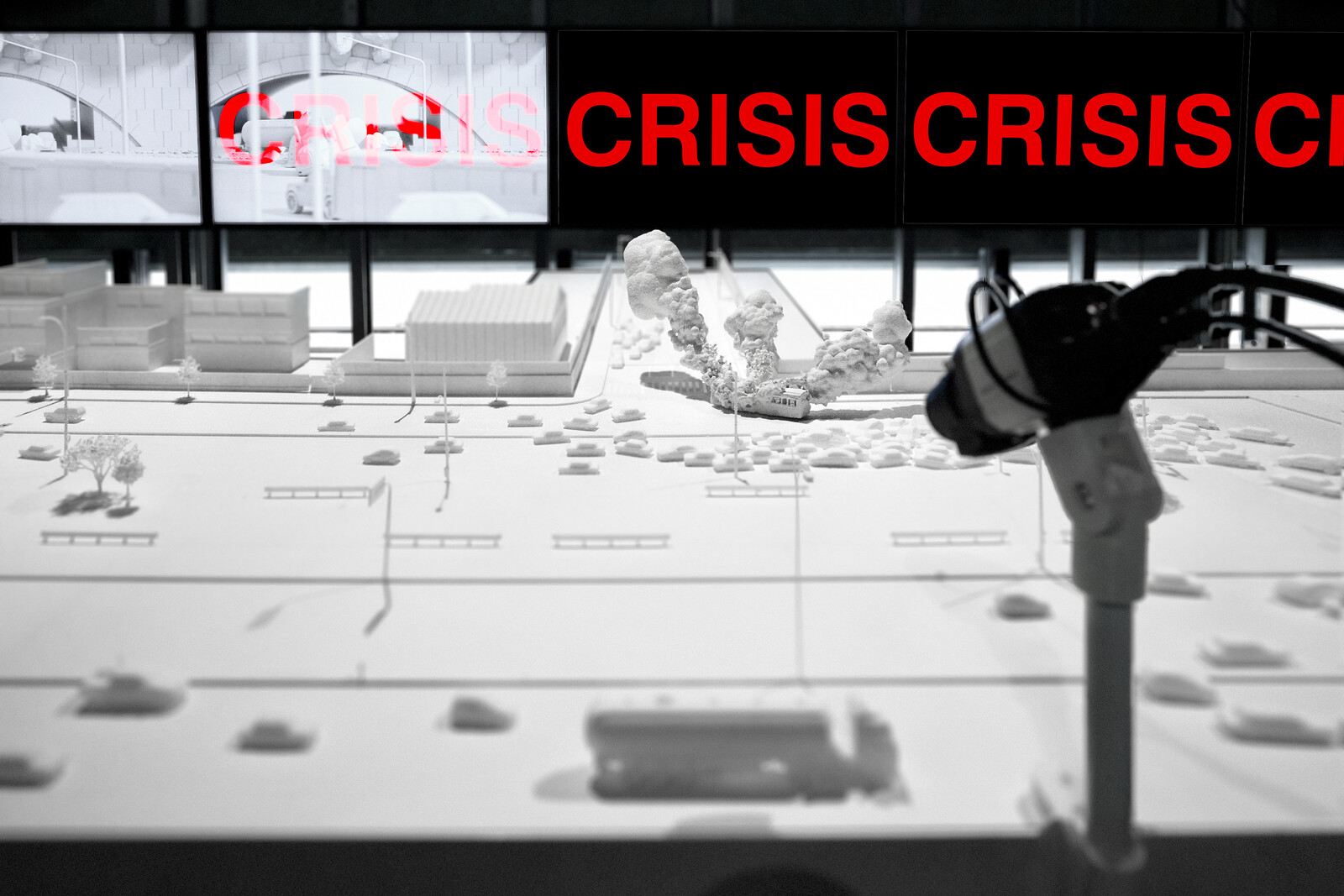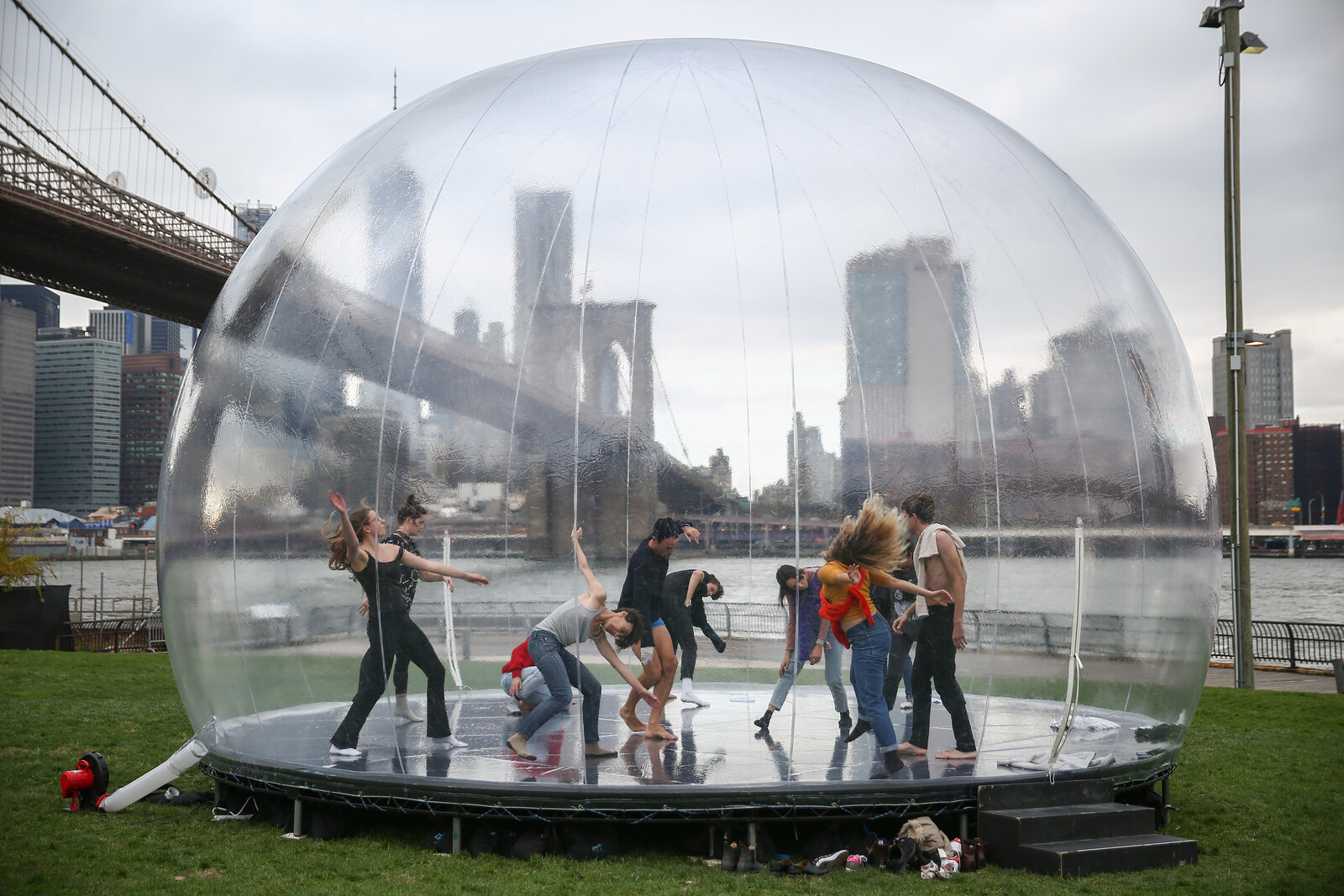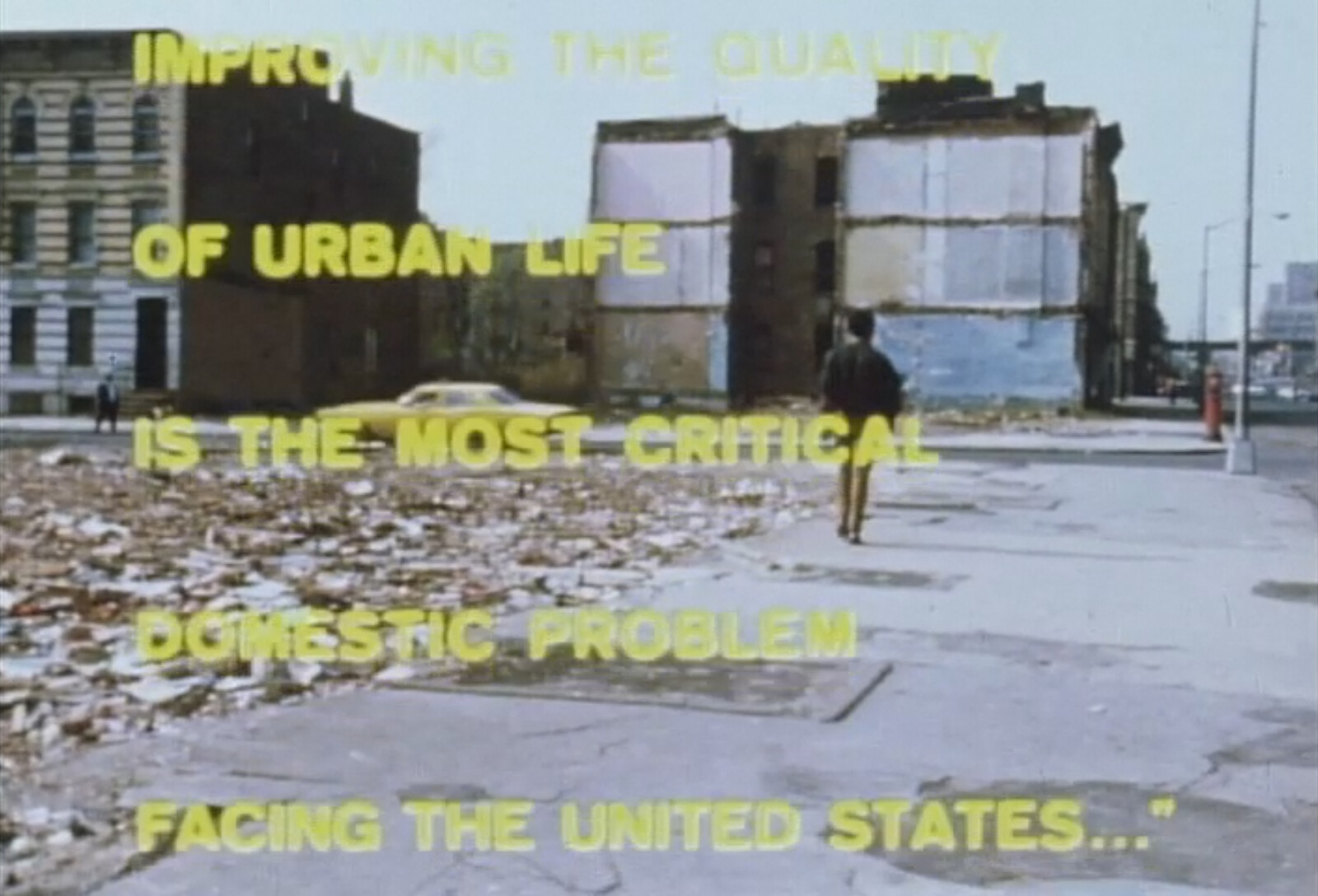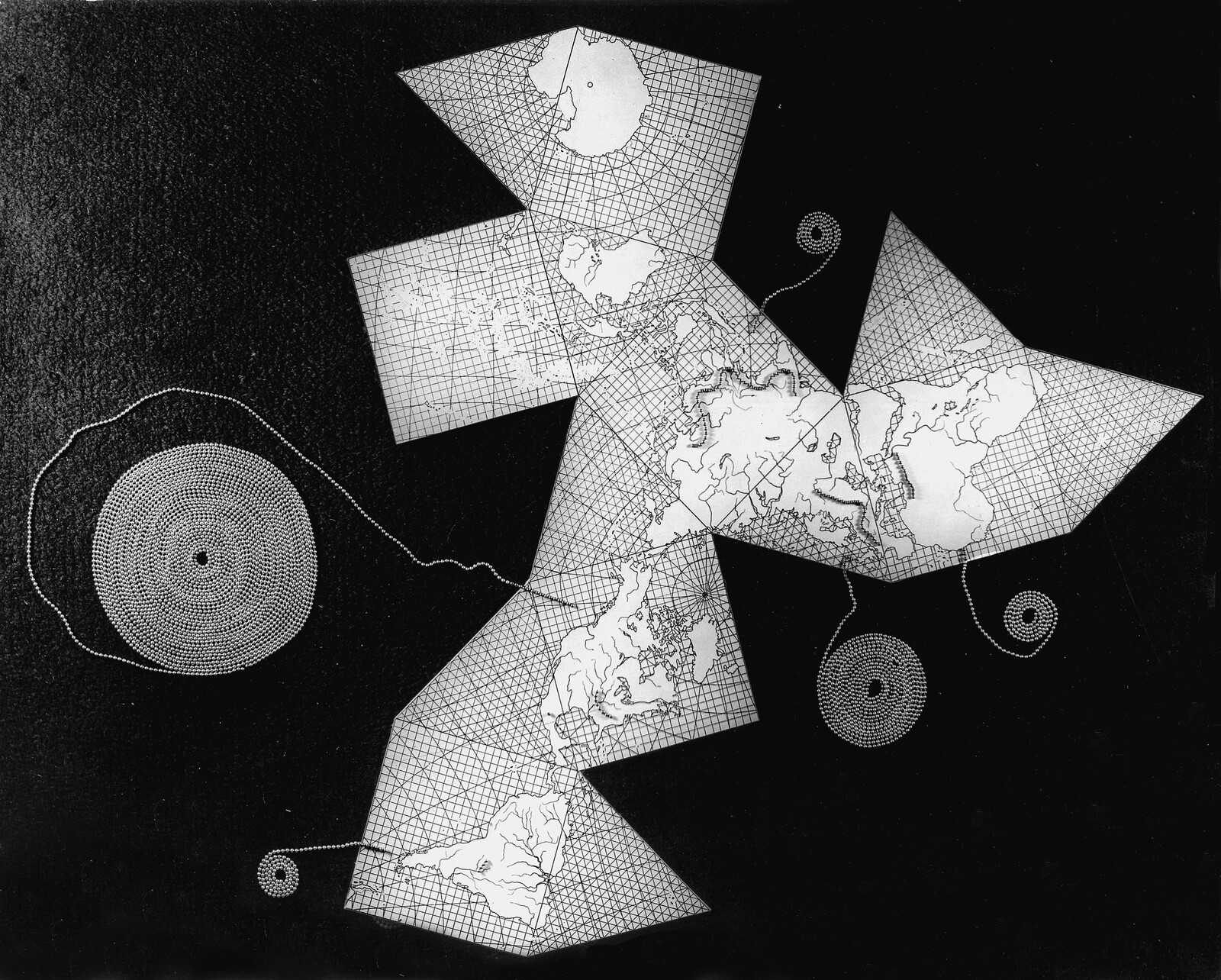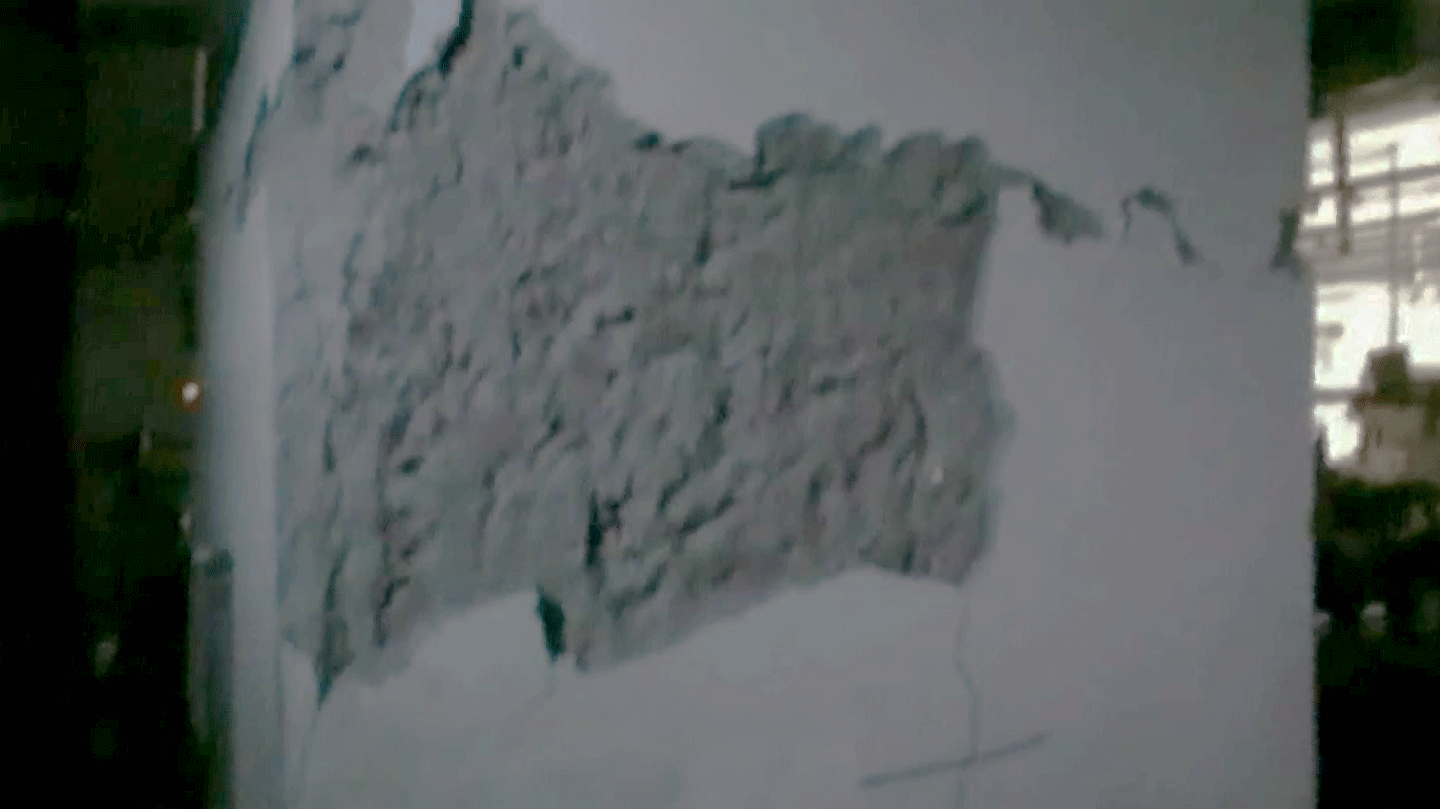Arguments presented here grew from the deep input of refugees and aid workers I met in camps in Kenya and Ethiopia, and elsewhere. I am thinking carefully on ways of writing with them.1
The analytic of migration offers a platform to pose two arguments. The first is that the dynamic of a situated and re-situated perspective is foundational to feminist histories of architecture. The second is that it performs the indispensable work of destabilizing historiographical presumptions of and desires for fixity at the heart of the architectural discipline.2 In following these arguments, this essay bolsters a growing body of feminist historiographical initiatives, which aim to redistribute power and co-produce solidarity through collaborative and intersectional practices that reassess objects and methods that have long constricted the labor of architectural history within the humanities and broader academy.3
Feminist architectural histories of migration and mobility may be isolated into two conceptually distinct, but related streams.4 One focuses on the vernacular, the folkloric, the everyday, and the anonymous, by transnationally mobile, cosmopolitan, modernist figures who have practiced across nations and continents, empire and postcolonial space, and borders of race, ethnicity, class, sexuality, and ideology. Margarete Schütte-Lihotsky’s kindergartens, Sybil Moholy-Nagy’s grain silo, Lina Bo Bardi’s Bahia, Minnette De Silva’s artisan, Denise Scott-Brown’s Las Vegas, and Hannah Schreckenbach’s mud architecture each stemmed from the view of a stranger, and turned a lens on culture: positing architecture not as exceptional, but as entangled with many other forms of cultural production. Another finds empowering links between mobility and architectural forms and practices in narratives of and by migrants whose designs, built forms, and constructed environments have not been understood as authored, or in anonymous objects, illegible within the frameworks of modern architectural history. The authority embodied by mobilities—in works such as camps built by refugees, exhibitions curated by exiled artists, or urban spaces seized by protestors, to name a few examples—poses a challenge to the purported stabilities of the architectural discipline. Such works have enacted forms of power predicated upon migration and mobility (or their mirrors, restriction and confinement), creating or unsettling architectural discursivity. Historically, they may have lacked signature, but not significance.5
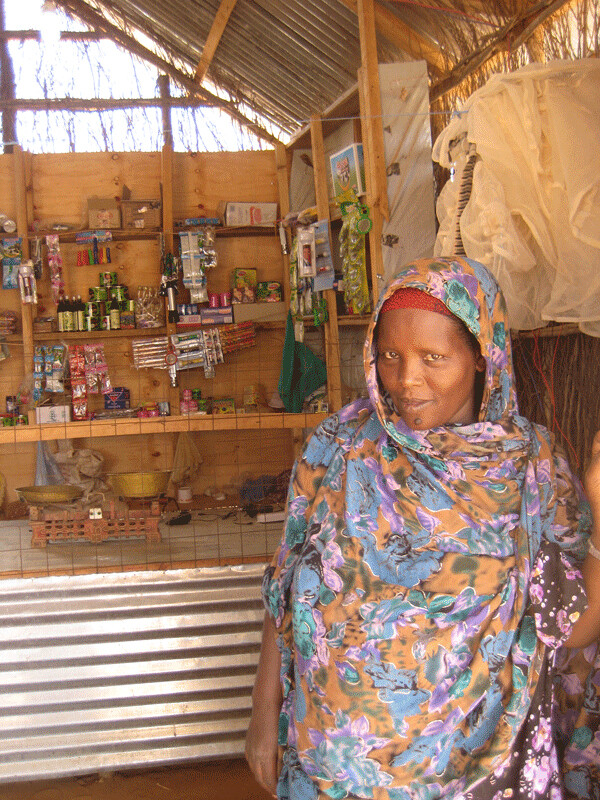

Shamso Abdullahi Farah inside shop, Ifo Camp, Dadaab, Kenya, 2011. Photo: Anooradha Iyer Siddiqi.
A feminist architectural history of migration
An episode from the recent past illustrates this second category of histories. In it, an emergency intervention ushered in the social transformation of a woman and a humanitarian organization. These, in turn, marked a crucial yet awkward shift for the surrounding institutional and built environments.6 Between 2007 and 2011, Shamso Abdullahi Farah, a registered refugee from Bula Hawo, Somalia, performed work integral to a shelter initiative in a forced migration and emergency setting in Kenya.7 This work destabilized an understanding of the “architect” as a figure legitimated exclusively by the state rather than the standing constructed environment, and of “architecture” as a form of material and cultural production charged with representing a distant authority, rather than enacting a local one. Farah’s narration of events and experiences of becoming a technical expert and social organizer recall the emergence of the “organic intellectual” Antonio Gramsci wrote about in prison.8 Her subjecthood and subjectivity together offer ways to think about modernity and the architecturally modern: whether these are indeed inalienable from the nation-state, and precisely how they are linked to forms of seeing. Historiographically, the episode suggests that studying a migratory and emergency environment—with attendant interruptions of spatiality, temporality, and historicity—works against essentializing definitions of normativity and precariousness, and instead gestures toward other stabilities, enabling re-narrations that depend upon new architectural referents, and new narrators.
Various theories may help to think through the elements of this dynamic. Rosi Braidotti’s nomadic theory works to undermine stabilities putatively produced by the colonial nation-state, and suggests subject formation through embodied multiplicities and the positionality of migration.9 More tangibly, Hilde Heynen reminds us of the “nomadic identities” for which Chantal Mouffe advocates, which operate under the condition “that, since any identity is always relational and defined in terms of difference, it can hardly be fixed in some positive essence; every identity is irremediably destabilized by its exterior and therefore subject to a process of permanent hybridization and nomadization.”10 The stakes of this, Heynen argues, are the stakes of modern architecture itself: interiors that offer the greatest possible flexibility. Farah perhaps encountered this provocation in the putatively ad hoc building category of shelter. If Farah’s position reads as that of a development subject simply making do with development aid, Saba Mahmood further reminds us that there are many ways to read embodied practices: her study of veiling demonstrated that its reinscription of religious norms did not necessarily deny it as an act of agency, as liberal-secular epistemological frameworks would suggest.11 Neither should agency (and the forms of resistance it would mirror) constitute a desired end, as some deracinated discourses on humanity fundamental to humanitarian thought and action demand.12 Farah’s embodied practice of designing and building and the epistemological frameworks it summons further confound when interpreted within the long history of Somali pastoralists’ relation to colonial territoriality, which produced the borderland geography and restrictive refugee camps within which she stands.13 Thinking with Felicity Scott that “architecture is one of the most effective sites through which to enact political claims,” the following vignette pursues this embodied practice: of architecture, its labor, and the forms of authority it potentially produced.14
Shamso Abdullahi Farah arrived to Kenya with her extended family twelve years after the establishment of Ifo camp, the first of several humanitarian settlements near the village of Dadaab. The government of Kenya and the United Nations High Commissioner for Refugees (UNHCR) established the settlements to respond to the civil war, drought, and famine that had displaced an estimated 1.7 million people in Somalia in 1991. The borderland they inhabit represents the afterlife of a colonial frontier: a contested territory within the state of Kenya inhabited primarily by people who self-identify as pastoralists and/or politically or ethnically as Somali. This region does not exhibit signs of development, such as paved highways, but it sits atop a large aquifer that has supported the prolonged existence of settlements intended to be temporary. The Dadaab refugee and migrant population of one half million is the third largest grouping in Kenya after Nairobi and Mombasa. The site is the largest ever administered by the UNHCR. The state of Kenya confines refugees to the camps and denies them the right to work.
Despite the density of settlement that can be seen in the plan view of Ifo camp, it consisted of an additive architecture: namely, the tuqul, or aqal, mobile dome dwellings common to East Africa. Tuquls were built by bending green acacia wood into arches, tying these members together to form a hemispheric structure, and reinforcing and cladding the frame with harar mats handwoven from drying grass. In the camps, repurposed textiles were used. Whether within or outside a camp context, this fabrication process was labor-intensive and bound up with gender identity. In some communities, girls learned to build the tuqul as part of coming-of-age rituals and ceremonies, which involved a period of self-sequestering and sharing of oral history, poetry, and expertise among women. This is to say, for some of my interviewees, “homemaking” included the labor and tasks associated with domesticity as well as design and construction of the dwelling.15 The work of architecture lay in an enactment of the gendered social field inasmuch as in symbolism, representation, and ritual space.
Within Farah’s first three years in Ifo, the milieu of acute emergency was such that shelter aid assumed paramount importance, equal to food and water distribution. As one long-term resident explained to me, refugees in Ifo sorely mistrusted the motives and competence of shelter aid programs.16 CARE, the organization that had been managing the Dadaab camps almost since their establishment, had constructed shelters that proved deadly, with roofs blowing off in heavy winds. The UNHCR initiated a program of shelter research and prototype development at its Geneva headquarters to respond to such problems globally, and contracted the Norwegian Refugee Council (NRC) to apply its expertise in shelter aid.17 The state-supported organization had integrated into its staff a variety of specialists in the spatialization of humanitarian operations. From 2006, when it started work in Kenya, the NRC employed several project managers trained in architecture or construction, many holding degrees from European architecture schools. In the Dadaab settlements, it built 3,000 shelters in 2007, and 3,500 in 2009, both considered high volumes of production for shelter aid.18
The NRC entered into a world of competing concerns when it started work in Ifo. The organization’s bias toward architectural expertise resulted in approaches to shelter that valued the discipline’s concerns: attention to design details, the craft of building, and a rational process of construction. In a context in which the dwelling unit held high value for the user and high cost for the aid provider, the organization circumvented the rationale of the global market through the largesse of the Norwegian government. It produced a strange, carefully detailed and well-made object, which inserted latent representations of the state of Norway into Ifo’s aesthetic, political, socioeconomic, and ideological fabric, which was at once part of Kenyan territory, Somali and other pastoralist cultures, international political space, and the social world of refugees and the stateless.
According to one refugee who was trained and eventually employed as a team leader and community mobilizer by the NRC, the architectural design and construction methods took into account Dadaab’s extreme environmental factors.19 Under its mud plaster protective exterior, the walls of this dwelling incorporated carefully squared, wire-cut, kiln-fired, cement-stabilized soil blocks—a modern technology surpassing technical and aesthetic standards elsewhere in the refugee settlements and surrounding villages. This technology offered possibilities for prefabrication and mass fabrication. Humanitarian engineers designed the walls to be supported by foundations set ten bricks deep into the ground, within a one-meter foundation dug by a specially-trained NRC team. These measures were intended for durability and longevity, to combat flooding, and to secure the vertical structure for roof support.
The dwelling occupied a synechdochal role, implying the humanitarian regimes, transportation and communications networks, diplomatic relations, and geography of the international supply chain, as well as silently asserting the presence of the Kenyan state and international order, even making national claims for Norway through the techno-aesthetics of an object. Taken as a fragment, it functioned metonymically to denote a foreign, industrialized, and hybrid system of governmental and nongovernmental actors—referencing the sovereign and subject together. This is not to claim that this signification was intended on the part of those who designed the object or placed it in this built environment, but that precisely through its making, such signification and immanent power relations were enacted.
The process of making this object was central to the initiative conceived by NRC staff members. They oriented the organization’s commitment to durable, well-crafted architecture to work doubly in refugee settings, mobilizing communities through training in the construction of shelters. According to the staff in Dadaab, they approached craft, and subsequently labor for shelters, with the intention of establishing a sense of ownership and empowerment in refugee communities—by instituting livelihoods training, skills-building, and physical protection against natural and social elements as multiple derivatives of the shelter aid package.
As with the tuqul, the issue of labor is central here. If the architecture exceeded basic needs for survival and offered a technical solution for mitigating the environmental challenges of the borderland, it also produced evidence-based data that broadened the NRC’s platform of technical expertise, and social construction of expert status. Just as these practices at Dadaab cemented the organization’s knowledge base, they contributed to its international profile, as its professional staff disseminated findings from the high-profile site through conferences and other circuits. This construction of institutional reputation, even aura, was based in part upon the physical and intellectual labor of refugees. The potency and multiple valences of labor in this process—intellectual or manual, performed by refugee, citizen, or other—constitute the stakes of Farah’s work.
Farah was among the first refugees who participated in the NRC’s pilot shelter initiative in 2007, in which refugees were provided construction materials and required to perform all construction labor. By then, “participatory” practices, following self-help development models that grew out of planning discourses from the 1960s and 1970s, had been thoroughly disseminated through international humanitarian networks as forms of “best practice.”20 In Ifo camp, “participation” was negotiated within a space in which residents were not citizens, land users could not legally own property, and the state denied refugees the right to labor for compensation. Yet this asymmetrical process must be further understood as transactional: in return for her participation, Farah was granted materials and trained in design and construction.
Refugees in Ifo camp vehemently resisted this shelter initiative, assessing it as unjust, incomplete, demanding work beyond that of other shelter programs, and draining family resources. Refugees were expected to contribute labor that might garner higher wages elsewhere, were forbidden to subcontract the construction, and were discouraged from trading shelter materials that could provide higher value as commodities, all while developing housing whose quality surpassed that elsewhere in the settlements and broader region, exacerbating already hostile relations with the host community. Donors viewed the high unit costs as inappropriately luxurious, and chafed as potential beneficiaries in the refugee camps criticized the program’s ideals and the shelters themselves, which aggravated regional tensions by expressing refugee permanence.
Farah differed on these matters. She utilized the NRC’s package, and requested additional materials to build a storefront, where she could trade goods to supplement her family’s ration. She executed the project working from specifications provided by the organization and directed a team of skilled and unskilled workers that included her spouse and children. If her work confounded expected gender roles, she did not make this claim in our interview. She leveraged work she would have performed in a non-displacement context—namely, the construction and maintenance of a tuqul—into a form of economic and sociopolitical actualization.
Any claim to be made of political actualization in this ambiguous situation returns to the question of writing feminist architectural histories, and hinges upon how subjecthood and subjectivity are formed when the urgent domesticities of forced migration and emergency inscribe practices not necessarily coterminous with the nation-state. One might argue that Farah merely engaged in petty capitalism, or that the valorization of her experience offers an alibi for oppressive development practices. However, it is possible to see that architecture produced various forms of legitimacy here. It cohered relief with aesthetics, it redirected material flows, it signified the state—specific states such as Kenya and Norway, as well as the international refugee framework—and it institutionalized a designer of a spatial commodity, effacing Farah’s own liminality. Her intersection with a paternalistic and transnational political, economic, and social system produced for her a situated expertise, power, and mobility. Farah’s embodied practice of designing and building led to other forms of power, vulnerability, and difference.
This points to historical claims to be made. This episode shows that a Shamso Abdullahi Farah, a Norwegian Refugee Council, and a United Nations High Commissioner for Refugees together ordered a sphere of sociality, politics, and differentiated aesthetic and cultural work. Formally certified architects, refugees, and unregistered others have been jointly responsible for the mass construction and architectural grain of the Dadaab settlements. However, in this setting, Farah’s architectural work rendered banal matters such as professional licensing. She engaged deeply with humanitarians and institutions, in spite of an asymmetry between herself and the state. This suggests that here, rather than the political sphere producing built form, something originating in the making of architecture effected politics and a political subjectivity. Understanding her work and social transformation in this way has ramifications for the writing of history.
Togethering, difference, and writing with
The people, processes, events, and things described here substantiate new narratives. Stepping back from the salvo offered by this one case may help to imagine how it or others like it model new historiographical approaches and lay ground for a feminist architectural history of migration. Such approaches must grow out of a practice of writing with: a practice that disrupts the forms of othering that are often produced in academia and recommissions scholarly endeavors.21
Such a practice is predicated upon allowing for forms of difference, which migratory or mobile objects and methods can bring into view. But how to think on difference? Peg Rawes writes;
the feminist ratio is located in difference, not sameness; in an affirmative dissimilarity that is constituted between our bodily, mental, ecological and political realities, and through which differentiated societies can be built, rather than normative, technocratic monocultures.22
For the terms of difference, Rawes collocates the affective with the rational—“passionate powers of reasoning but, importantly, a reasoning that is not divorced from our capacity to produce rational forms of agency”—and situates in opposition to Giorgio Agamben’s theory of exception Baruch Spinoza’s of care (a far fuller, warmer, and more generative framework, in my opinion). Difference is also fundamental to creative power—as articulated ferociously by Audre Lourde: “Only within that interdependency of different strengths, acknowledged and equal, can the power to seek new ways of being in the world generate, as well as the courage and sustenance to act where there are no charters… survival is not an academic skill,” she writes. “It is learning how to take our differences and make them strengths. For the master’s tools will never dismantle the master’s house.”23
Writing with is a way of taking differences and making them strengths: a radical form of collaboration that may sharpen the writing of architectural histories, making plain structural asymmetries, and bringing into view variegated ethical landscapes. Writing with begins with becoming conscious of difference, making it palpable in the way that histories centered on architecture have a special capacity to do as they perform a variety of enunciations (distinguishing figures from ground, and so on). Migratory objects and methods can bring about a specific consciousness of difference to combat a flattening that happens during the development of scholarship, which alienates the expert scholar from the so-called non-experts. This process can lead to a scholar othering the selfsame people she learns from or writes for. This is a particularly awkward intellectual and discursive position for architectural history, an academic discipline that hews as much to examining the work of the hand as the work of the mind, and regularly calls upon makers—whose narratives may resemble Farah’s—for lessons.
What if difference were instrumentalized not in a process of othering, but instead in a process of togethering? To me, this would mean privileging the labor constituted in the process of writing with colleagues, however varied the tasks each performs or disparate the connection each might retain to the written result. It would mean valuing the engaged thinking and mutual care for those in the collaboration as highly, even more highly, than the published product. It would mean redefining writing as a long and rigorously nonviolent process of thought and care.24
Many asymmetries and forms of epistemic and spatial violence go unstated in academic writing and other forms of institutional knowledge production.25 Think of Dipesh Chakrabarty’s recent comments on the politics of the production of general knowledge, that “the ‘general’ is a Western general… Obviously, there is some exchange, but you have to realize that the exchange is loaded; it’s not an equal exchange.”26 These comments, leveling a broadside at area studies and reiterating the critiques leveled by Provincializing Europe on the colonial universalization of knowledge—that knowledge produced in the West stands in for general knowledge and ultimately aids the West in knowing itself, rather than aiding its subjects in knowing themselves, or transcending such categorical divisions—remind me of reasons for desiring radical collaboration, as well as challenges in achieving it.27 What if the writing occurs under oppressive apparatuses of the security state? What if the writing collaborative includes Frantz Fanon’s damnés, Sylvia Winter’s “group that is still made to occupy the nadir … within the terms of our present ethnoclass Man’s overrepresentation” (to which she defiantly adds, “the struggle of our times, one that has hitherto had no name, is the struggle against this overrepresentation”)?28 How to collaborate across various structural divides gets at core feminist and anticolonial questions: why do we produce knowledge, for whom, and at whose expense? And to follow Chakrabarty’s provocation: who is reflected in this knowledge?
Asking these questions in a study that takes equally seriously the thinking of Shamso Abdullahi Farah and Dipesh Chakrabarty is not to assert equivalences that might obscure or dismiss profound structural inequalities that privilege certain formations of power and knowledge, nor is it to suggest academic commensurabilities between very different forms of intellectual labor. It is, however, to see whether and how solidarities may be sustained through the scholarly venture of feminist architectural histories of migration, beyond academic authorship and structural inequalities into an act of togethering, of writing with. These aims led me to a collaboration with Shamso Abdullahi Farah to recuperate a history oriented toward the archive of her narratives, and away from those of a United Nations agency or Norwegian nongovernmental organization. They pushed me and Rachel Lee to share materials, data, travel, and meaningful phone calls from long distances at all hours, and at times to put each other’s academic production before our own. Though very different, both of these experiences were attempts to recognize many forms of authorship within a collaboration. Fred Moten has identified something similar in collaboration, that “there are these props, these toys, and if you pick them up you can move into some new thinking and into a new set of relations, a new way of being together, thinking together. In the end, it’s the new way of being together and thinking together that’s important, and not the tool, not the prop.”29 To write with is to privilege the co-construction of meaning over the many props, some which represent catalysts for work and some its finished forms. I propose the co-construction of meaning through architectural histories that do not efface difference but instead are predicated upon it, and that make use of migration as a method and object of study in order to articulate difference.
These endeavors stem from a politics, to be sure, but also from a feminist historiographical agenda, a desire to write more meaningful histories that take “architecture” as an object. If my saying so presents a demand that these histories attempt to be just, then I recognize the analytical problems and unresolvable complexity that this provokes. I posit that togethering in writing—collaborating at intersections to write with—offers a hopeful feminist strategy in response.
I wish to credit and extend a hand to fellow participants in the University of Pennsylvania symposium, “Structural Instabilities: History, Environment, and Risk in Architecture,” and other colleagues who form the readership for this dossier of essays, especially those who have worked on feminist histories or related questions of engaging radical forms of collaboration in scholarship.
The arguments in this essay stem from my research and twinned concern for feminist histories and instabilities in architectural theory, however, the conceptualization of “feminist architectural histories of migration” and the text in this paragraph and the next draw from a collaboration with Rachel Lee. Each of us works extensively on migration and mobility and we began collaborating in 2014. See: “On Margins: Feminist Architectural Histories of Migration,” a dossier directed by Rachel Lee and Anooradha Iyer Siddiqi, in Architecture Beyond Europe, forthcoming 2019, ➝; Siddiqi and Lee, “A Woman’s Situation: Transnational Mobility and Gendered Practice,” European Architectural History Network co-chaired session, 2018, with field note in preparation for Architectural Histories; Lee, “Women and Gender in Architecture and Urban Design,” unpublished special interest group report, European Architectural History Network, 2018; Siddiqi, “Feminist Architectural Histories of Migration,” paper for “Structural Instabilities: History, Environment, and Risk in Architecture” symposium, University of Pennsylvania, 2018; Lee and Siddiqi, “Extreme Mobility, Local Practice,” paper for “AA Women and Architecture in Context 1917-2017” conference, Architectural Association XX 100, 2017; Lee, “A Transnational Assemblage,” in AA Women in Architecture, 1917-2017, eds. Elizabeth Darling and Lynne Walker (London: AA Press, 2017): 108–28; Siddiqi and Lee, “Women on the Edge: Mobility and Regionalism from the Margins,” European Association for Urban History co-chaired session, 2016. See also Lee, Diane Barbé, Anne-Katrin Fenk, and Philipp Misselwitz, eds., Things Don’t Really Exist Until You Give Them a Name: Unpacking Urban Heritage (Dar es Salaam: Mkuki na Nyota, 2017), with essay by Siddiqi, “A Shadow Heritage of the Humanitarian Colony: Dadaab’s Foreclosure of the Urban Historical,” 100-105.
While there is a broad literature to cite, the following interventions represent collaborative historiographic practices, whose articulated aims in the relationship between theory, historiography, and practice have informed the “Feminist Architectural Histories of Migration” project. Jane Rendell, Barbara Penner, and Iain Borden, eds., Gender Space Architecture: an interdisciplinary introduction (London: Routledge, 2000). Hilde Heynen and Gülsüm Baydar, eds., Negotiating Domesticity: spatial productions of gender in modern architecture (New York: Routledge, 2005). Hélène Frichot, Catharina Gabrielsson, and Helen Runting, eds., Architecture and Feminisms: Ecologies, Economies, Technologies (London; New York: Routledge, 2017). Jane Rendell, “Chapter 4: Tendencies and Trajectories: Feminist Approaches in Architecture,” in The SAGE Handbook of Architectural Theory, ed. C. Greig Crysler, Stephen Cairns, and Hilde Heynen (London: SAGE, 2012). Karin Reisinger and Meike Schalk, eds., “Becoming a Feminist Architect,” Field: 7:1 (2017); “Styles of Queer Feminist Practices and Objects,” Architecture and Culture 5:3 (2017). Justine Clark, Naomi Stead, Karen Burns, Sandra Kaji O’Grady, Julie Willis, Amanda Roan, and Gill Matthewson, Parlour: women, equity, architecture (2012), ➝. Lilian Chee, Barbara Penner, Anooradha Iyer Siddiqi, and Naomi Stead, eds., Situating Domesticities, edited volume in preparation. Isabelle Doucet and Hélène Frichot, eds., “Resist, Reclaim, Speculate: Situated perspectives on architecture and the city,” Architectural Theory Review 22:1 (2018). Ana María León, Tessa Paneth-Pollak, Olga Touloumi, and Martina Tanga, “Contested Spaces: Colony, Plantation, School, Prison, Kitchen, Closet,” Global Architectural History Teaching Collaborative lecture module, ➝. Rosalyn Deutsche, Aruna D’Souza, Miwon Kwon, Ulrike Müller, Mignon Nixon, and Senam Okudzeto, “Feminist Time: A Conversation,” Grey Room 31 (Spring 2008): 32–67. Léopold Lambert, ed., The Funambulist 13, “Queers, Feminists & Interiors.” “Women in Architecture” series, Places, ➝. “Architectural Historiography and Fourth Wave Feminism,” Architectural Histories special collection, forthcoming. Now What?! Advocacy, Activism, and Alliances in American Architecture since 1968, exhibition curated by ArchiteXX (Lori Brown, Andrea Merrett, Sarah Rafson, and Roberta Washington), Pratt Institute, May 24–July 6, 2018. African Mobilities: This Is Not a Refugee Camp Exhibition, exhibition curated by Mpho Matsipa, Architekturmuseum der TU München, April 26–August 19, 2018, ➝. Workaround—Women, Design, Action, exhibition curated by Kate Rhodes, Fleur Watson, and Naomi Stead, RMIT University, July 25–August 11, 2018, ➝. See also curation projects by Jackfruit Research & Design, ➝, for example: Mutable: Ceramic and Clay Art in India since 1947, exhibition curated by Sindhura D. M. and Annapurna Garimella / Jackfruit Research & Design, Piramal Museum of Art, Mumbai, October 13, 2017–January 15, 2018; Preview of Works by Ramesh Pithiya, exhibition curated by Jackfruit Research & Design, Milind Nayak’s studio, Bangalore, May 26–30, 2006, with Art of the Matter: A Series on Art and Literature, “1: Queerness,” by Ruchika Chanana, Kimaaya.
The understanding of migration and mobility as distinct terms is central to the “Feminist Architectural Histories of Migration” project, which in future publications will attend to aspects that relate or distinguish them, in part, through analysis of the forms and figures in this paragraph.
I have been developing these theorizations in two strands. One is an architectural and territorial history of colonialism and humanitarianism in East Africa, based in part on the gendered work of forced migrants within and beyond modes of emergency, as commissioners, designers, and fabricators of the constructed environments of camps. The other is on modernist cultural production in imperial South Asia, its arts and crafts inflections, and its preoccupations with heritage, using as a starting point the migratory architectural career of Minnette de Silva (1930s-1990s). These projects draw empirically from related Indian Ocean histories of modernity and architectural modernism, but are also historiographically and theoretically linked, as feminist architectural histories of migration.
This history was developed in two symposia, “The Housing Question,” Nomad Seminar in Historiography, organized by Juliana Maxim and Can Bilsel at the University of San Diego in 2015, and “Situating Domesticities in Architecture,” organized by Lilian Chee, Simone Chung, and Jessica Cook at the National University of Singapore in 2017. Aspects of it are being developed for publications arising from each.
This study is culled from eight years of research I conducted in state, academic, cultural, and humanitarian archives, as well as individual and group interviews with approximately five hundred refugees, aid workers, officials, and architects in camps and elsewhere, some on behalf of the Women’s Refugee Commission for the report Preventing Gender-based Violence, Building Livelihoods: Guidance and Tools for Improved Programming, ➝. This paper draws from narrations by Shamso Abdullahi Farah during a day spent with her. Norwegian Refugee Council staff member Hashim Keinan provided real-time translation from Somali to English as we walked around Farah’s plot and examined the buildings she and her family members built. I directed my questions to Farah, Keinan translated, and Farah responded directly to me. In Keinan’s translation, he occasionally responded directly to my questions and referred to Farah in the third person. I have made allowances for his interpretation in mine. Shamso Abdullahi Farah, interview with author and Bethany Young, on behalf of the Women’s Refugee Commission, translation and interpretation by Hashim Keinan, 2011.
Antonio Gramsci, et. al., Selections from the Prison Notebooks of Antonio Gramsci (New York: International Publishers, 1972), 5–14.
Rosi Braidotti, Nomadic subjects: embodiment and sexual difference in contemporary feminist theory (New York: Columbia University Press, 2011).
Hilde Heynen, “Modernity and Domesticity: Tensions and Contradictions,” Negotiating Domesticity: Spatial Productions of Gender in Modern Architecture (London; New York: Routledge, 2005): 22. Chantal Mouffe, “For a Politics of Nomadic Identity,” in George Robertson, Melinda Mash, Lisa Tickner, Jon Bird, et. al., eds., Travellers’ Tales: Narratives of Home and Displacement (London; Routledge, 1994): 105-113.
Saba Mahmood, Politics of Piety: The Islamic Revival and the Feminist Subject (Princeton: Princeton University Press, 2011).
See Alexander Weheliye’s critique of the effacement of racialized constructions of the category of the human. Alexander G. Weheliye, Habeus Viscus: Racializing Assemblages, Biopolitics, and Black Feminist Theories of the Human (Durham, NC: Duke University Press, 2014).
Anooradha Iyer Siddiqi, “Architecting the Border: The Hut and the Frontier at Work in East Africa.” The Funambulist 10 (2017).
Felicity D. Scott, Outlaw Territories: Environments of Insecurity / Architectures of Counterinsurgency (New York: Zone Books, 2016): 442.
The complexities alluded to here will be addressed in Anooradha Iyer Siddiqi, “Humanitarian Homemaker / Emergency Subject,” Architecture and the Housing Question, eds. Juliana Maxim and Can Bilsel (London: Routledge, forthcoming 2019).
Anonymous, interview by author, on behalf of the Women’s Refugee Commission, 2011.
As multiple interviews indicated, shelter and settlements is one of the NRC’s well-known major areas of expertise and its own stated core competence; see ➝.
NRC Shelter Adviser, interview by author, 2012.
Former NRC incentive worker, multiple interviews by author, 2012–2014.
Interviews with Farah, other refugees, and aid workers who worked with NRC attested to this. Anooradha Iyer Siddiqi, “Architecture Culture, Humanitarian Expertise: From the Tropics to Shelter, 1953-1993,” The Journal of the Society of Architectural Historians 76.3 (September 2017), 367–384. See also Farhan Karim, ed., The Routledge Companion to Architecture and Social Engagement (New York: Routledge, 2018); Helen Gyger, Improvised Cities: Architecture, Urbanization, and Innovation in Peru (Pittsburgh: University of Pittsburgh Press, forthcoming 2018); M. Ijlal Muzaffar, “The Periphery Within: Modern Architecture and the Making of the Third World,” Ph.D. diss., Massachusetts Institute of Technology, 2007.
This argument builds on the reorienting and recuperative work already performed by a range of subaltern and postcolonial studies projects. Think of Gayatri Chakravorty Spivak exposing the “alien agent of ‘true’ history in native space” and finding the embodiment and historical intervention of the Rani of Sirmur in a mere two acts recorded by the East India Company (her payment of a pension to a great-aunt and her declaration to perform sati). Consider Prathama Banerjee’s analysis of a possible subject position and discursive field for the indigenous adivasi, long constituted through colonial and national structures as “history-less” people inhabiting “the condition of being always already archaic and yet indelibly presentist.” Hear also, as Annapurna Garimella marshals related interrogations toward a curatorial field failing to produce discursive parity between Anglophone and vernacular art, asking, “What does the folk or tribal artist, the vernacular artist, do by making and innovating through art?…Generating an even more indigenous contemporary, or an alternative engagement with the global? Gayatri Chakravorty Spivak, “The Rani of Sirmur: An Essay in Reading the Archives,” History and Theory 24:3 (October 1985), 267. Prathama Banerjee, “Writing the Adivasi: Some historiographical notes,” The Indian Economic and Social History Review 53:1 (2016), 16. Annapurna Garimella, “The Vernacular Contemporary,” paper presented in the Melbourne Art Fair 2012 Lecture and Forums, ➝.
Peg Rawes and Douglas Spencer, “Material and Rational Feminisms,” in Architecture and Feminisms: Ecologies, Economies, Technologies, eds. Hélène Frichot, Catharina Gabrielsson, and Helen Runting (London: Routledge, 2017).
Lourde’s often cited call to order must be understood in its historical specificity and through the positionality of sexuality, gender, and race that situated her words. Her conceptualization of radical feminism nevertheless sharpens this reflection on Farah’s intersections with architecture and power. Audre Lourde, “The Master’s Tools Will Never Dismantle the Master’s House,” in Audre Lourde (with introduction by Alice Walker), The Audre Lorde Compendium: Essays, Speeches and Journals (London: Harper Collins, 1996). See also Aqdas Aftab, “Appropriating Audre: On the Need to Locate the Oppressor within Us,” Bitch Media, February 22, 2017, ➝.
I am grateful to Sophie Debiasi Hochhäusl, a co-organizer of “Structural Instabilities,” for multiple discussions which clarified this thinking, particularly those she convened in 2017 and 2018 at the Radcliffe Institute at Harvard University, as well as others related to her papers on the intellectual practices of Margarete Schütte-Lihotsky, including one for Anooradha Iyer Siddiqi and Rachel Lee, “A Woman’s Situation: Transnational Mobility and Gendered Practice,” European Architectural History Network co-chaired session, 2018. I am also grateful to Annapurna Garimella for several discussions in 2018 on the intellectual work performed through craft (in all senses of the word), the construction of spaces of complexity, and the strengthening of communities of care for rigorous acts of reading, writing, and thought.
Some aspects of this were addressed in Andrew Herscher and Anooradha Iyer Siddiqi, “Spatial Violence,” Architectural Theory Review 19:3 (December 2014), 269–277. While some academic fields have attempted to take on the problem of epistemic violence, for example, those concerned with indigenous people’s politics, architectural history as currently configured primarily in art historical and architecture school contexts has not yet contributed robustly to this discussion (with notable exceptions in recent initiatives to decolonize knowledge production around architecture, art, and aesthetics).
Dipesh Chakrabarty and Ian Pollock, “The knowledge we value: Dipesh Chakrabarty talks the contentious politics of knowledge production,” The Familiar Strange podcast, episode 7, February 4, 2018, ➝.
Dipesh Chakrabarty, Provincializing Europe: Postcolonial Thought and Historical Difference (Princeton: Princeton University Press, 2008).
Frantz Fanon (with introduction by Jean-Paul Sartre), Les Damnés de la Terre (Paris: Éditions Maspero, 1961). Sylvia Winter, “Unsettling the Coloniality of Being/Power/Truth/Freedom,” The New Centennial Review, Volume 3, Number 3 (Fall 2003): 261–262. For Sylvia Winter, “ethnoclass Man” stands in as the universal subject in discourses on humanity—for her, a Western bourgeois conception “which overrepresents itself as if it were the human itself.” Sylvia Winter, “Unsettling the Coloniality of Being/Power/Truth/Freedom,” The New Centennial Review, Volume 3, Number 3 (Fall 2003): 260.
Stefano Harney and Fred Moten, “The General Antagonism: An Interview with Stevphen Shukaitis,” in The Undercommons: Fugitive Planning & Black Study (Wivenhoe; New York; Port Watson: Minor Compositions, 2013): 106.
Structural Instability is a collaboration between e-flux Architecture and PennDesign.
